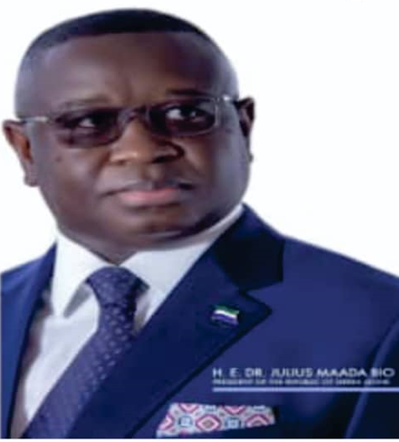Sierra Leone, at 63, is still grappling to stand on its legs. It has lagged behind many countries in Africa and the sub-region and its counterparts in the Mano River Union, including Liberia, Guinea, and the Ivory Coast. Recent reports show that Sierra Leone is among the top 10 African countries with the highest external debt in 2024, courtesy of Business Insider Africa and the International Monetary Fund (IMF). This suggests that Sierra Leone is 2nd among the largest external debt countries in West Africa, behind Ghana, which leads the way. According to the report, Sierra Leone is ranked 10th among 53 African countries with the biggest external or foreign debt with a GDP of 43.67%, behind Benin in 9th place with 44.70 %, Sudan 44.85%, Sao Tome Principe 46 .53%, Ghana 46.54, Lesotho 46.8%, Angola 52.91%, Rwanda 60.19%, Mozambique 65.54% and Cape Verde 93.25%.
People may have asked, what is external debt? External debt, otherwise known as foreign debt, is money that a government, organization, or household borrows from the government or private leaders of another country. A country’s obligations to organizations like WB and ADB, among others, form part of this category. Foreign debt can also comprise short-term loans and long-term loans.
According to economic experts, external debt is not new; it has always existed. Past Presidents, President Ahmad Tejan Kabbah(Late), Ernest Bai Koroma, and incumbent President Bio, have all taken external debt on behalf of the country and its people to undertake development, but the state of the country’s external debt surged under President Bio. It rapidly increased threefold during his first term in office.
At 63 years of Independence, Sierra Leone’s external and domestic debt is one of the largest in West Africa, but there is little or nothing to point at. Our road network is bad, infrastructural development is lacking, human capital development is caught in the web, basic social amenities like electricity supply and pipe borne water, housing among others are inadequate. Then, with the mammoth public debt accrued, people asked, what has it been used for in the country? Countries like Rwanda and Ghana, which made the top 10, for example, have some development which their citizens can point at, unlike Sierra Leone, where the salary is a mere pittance, the unemployment rate is unimaginable, the standard of living is poor, inflation surges and high costing of living is the order of the day.
‘’While foreign loans may be an effective tool for financing growth and filling short-term financial shortfalls, unregulated accumulation can sow the seeds of economic insecurity and impede long-term success. Unfortunately, this has been the case for several African countries. Debt servicing has been an economic nightmare for some countries on the continent’’ Business Insider Africa, 2024 report.
This suggests that although foreign loans could finance growth and short-term financial shortfalls, debt servicing is an economic nightmare for some countries, like Sierra Leone, where foreign loans have become an economic distress of a debt-risk country. Excessive amounts of foreign debt have hindered the country’s capacity to invest in our financial prospects vis-à-vis the big five game changers. According to Business Insider Africa ‘’A country that makes considerably more than it owes not only underscores sustainability but also enhances investor confidence as a result and, in the end, has little concern or faces little to no economic complications when it comes to debt re-payment. However, as in certain African nations, when debt is proportionate to GDP, the country risks experiencing an economic catastrophe’’ The report further stated that: ‘’The primary drawback of a high external debt-to-GDP ratio is the increased vulnerability it poses to external shocks and fluctuations in global financial markets. In times of crisis, such nations may find themselves with limited fiscal manoeuvrability, forced to implement austerity measures, cut public spending, or seek bailouts from international financial institutions.’’


